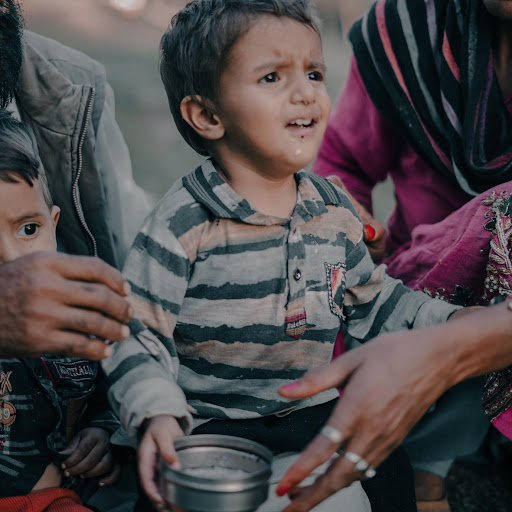Defining food security
Food security is a situation when “all people, at all times, have physical and economic access to sufficient, safe and nutritious food to suit their dietary needs and food preferences for an active and healthy life”. This definition of food security includes vulnerability to and coping mechanisms for food insecurity in addition to current intake, nutritional status, and health. Given the number of phrases that are closely related, it is important to note how different some of the definitions are. Informally referred to as “food insecurity,” “hunger” is formally described as an “uncomfortable or painful sensation brought on by a lack of food.” Both those who are food insecure and those who are not can feel temporary hunger. Undernutrition, or a nutritional status significantly below predicted values, is referred to as malnutrition in this context.
Food availability (production and commerce), access (buying power or capacity to produce), and utilisation (the household’s ability to consume the food they have and the body’s biological ability to digest food) are the three pillars of food security. A household becomes food insecure when it is unable to counteract detrimental effects on food availability, access, and/or consumption. The elements of provision (direct assistance), protection (reducing the impact of shocks and protecting assets related to livelihoods), and promotion (building assets and capabilities related to livelihoods) in terms of livelihoods describe various types of interventions that deal with food security and livelihoods more generally. Direct provisioning is frequently considered in emergencies, but livelihood protection and even promotion initiatives might be crucial as well.
Defining emergencies
Despite widespread use, there is scant agreement on what qualifies as “an emergency.” The phrase can be used to refer to a wide range of various situations connected to various types of shock, various causal elements underlying the situations or shock, or various results in terms of the status of impacted people. The World Food Program (WFP) defines emergencies as urgent situations in which there is clear evidence that an event or series of events has occurred that causes human suffering or immediately poses a threat to human lives or means of subsistence and which the [community or local] government concerned lacks the resources to address. It is also a demonstrably abnormal event or series of events that results in exceptional disruption in the life of a community.
One or more of the following may be present in the event or series of events: Natural disasters, man-made disasters that cause migration or refugee flows, slow-onset food crises brought on by pests, illnesses, and crop failures that erode the ability of vulnerable communities to satisfy their food demands, severe economic shocks, and complex emergencies. Complex emergencies are described as “humanitarian crises… where there is a total or significant breakdown of authority resulting from internal or external conflict and which requires an international response that goes beyond the mandate or capacity of any single agency”. This definition involves not just conflict that poses a threat to the affected communities but also considerable access challenges and security hazards for humanitarian organizations and staff.
Conceptual issues in emergency food security
Before we look at particular interventions, a few conceptual issues need to be established. Here is a basic outline of them.
- The notion of ‘entitlements’
In a nutshell, entitlements are types of legitimate food access. They consist of food production (direct production or gathering), trade (encompassing the exchange of goods and services, including selling labour and other resources in order to purchase food), and transfers (from state to individual or household, between or among households, or between non-state agencies and households or individuals). Acute catastrophes or famines are brought on by a sudden decline in food availability, while food insecurity is just a supply issue. Even in the absence of a general food shortage, a collapse in entitlements can cause famines or food security crises: “Starvation is a matter of some people not having enough food to eat, and not a matter of there being not enough food to eat”.
- Understanding ‘famine’, ‘vulnerability’ and ‘livelihoods’
Famine is therefore the result of an entitlement breakdown process, and it can have a multitude of causes. Not all food security issues, though, qualify as “famines.” However, it’s important to notice two things. First, such processes don’t always emerge from uncontrollable circumstances. Many recent studies have demonstrated that starvation is a process that can be artificially regulated, which is frequently the case during times of war or political conflict. Second, it has been very challenging to define exactly what a famine is since the word “famine” is so emotive. The FAO has attempted to distinguish less severe “phases” of crisis in addition to defining famine as the most extreme of crises. Famine may be defined very differently locally than it is in the humanitarian community.
- The UNICEF Framework for Child Malnutrition
One of the causes of malnutrition, according to the UNICEF framework, is food insecurity, which is thus defined as having insufficient access to food. Although malnutrition and food insecurity are commonly confused as the same thing, malnutrition is caused by a variety of reasons, among which food insecurity is one.
- ‘Chronic’ and ‘transitory’ food insecurity
The terms “chronic” and “transitory” allude to the temporal features of food insecurity, the former being long-lasting or persistent and the latter being transient. Chronic food insecurity is defined as “the inability of a household or individual to meet the minimum daily food requirements for a prolonged period of time,” “a persistent inability on the part of the household to provision itself adequately with food,” and “when households are unable to meet food needs in normal times because they lack sufficient income, land, or productive assets, or experience high dependency ratios, chronic illness, or social barriers.”
Contrarily, transitory food insecurity is typically characterized as “a sudden (and frequently precipitous) drop in the ability to purchase or grow enough food to meet physiological requirements for good health and activity,” “the sudden reduction of a household’s access to food to [levels] below the nutritionally adequate level,” and “when there is a temporary inability to meet food needs, usually associated with a specific shock or stress such as drought, floods, or civil unrest.” As seen by these criteria, transitory food insecurity typically results from brief shocks and fluctuations, whereas chronic food insecurity typically relates to structural deficits or susceptibility. However, there are clear connections between the two.
- The role of markets in food security
A thorough consideration of food security necessitates a grasp of markets. Understanding the behaviours and expectations of market participants, such as merchants, importers, households, and policymakers, is part of this. In addition, there are times when markets themselves may be better delivery systems for goods and services – even to emergency-affected communities – than are typical humanitarian programs. This is especially true for emergency interventions that involve either cash or food transfers. To ascertain if market-based interventions will be successful, it is important to evaluate both the efficiency of markets and the accessibility of food and other necessities in local and regional supply. The nature of the crisis has a big impact on how the markets operate. While some crises (like the Indian Ocean tsunami) may have wreaked devastation on infrastructure and human life, they tend to leave production and marketing activities relatively undisturbed.
Implications
This brief review of food security, emergencies, and associated conceptual challenges has several ramifications. Food insecurity is typically one of many possible results of a crisis; it is typically not the crisis’s root cause. As a result, tackling food insecurity during crises on your own is rarely a sufficient approach. The humanitarian response has historically been particularly sensitive to the outcome of food insecurity, which continues to be the largest single response category internationally. However, an analysis must pay attention to both the causes and effects of crises. There are numerous possible strategies for addressing those effects, but picking the appropriate one takes a thorough investigation. These “outcomes” are an integral aspect of the cycle of recurrent food insecurity.
Finding the best means to meet the complete spectrum of humanitarian needs locally will be a crucial task in building an emergency food security response. Responses are almost always needed to address a wider variety of requirements than a single consequence, like food insecurity. This may be achieved more successfully by some approaches than others, which you can learn in our Food Security & Nutrition in Emergencies course. Enrol today!







